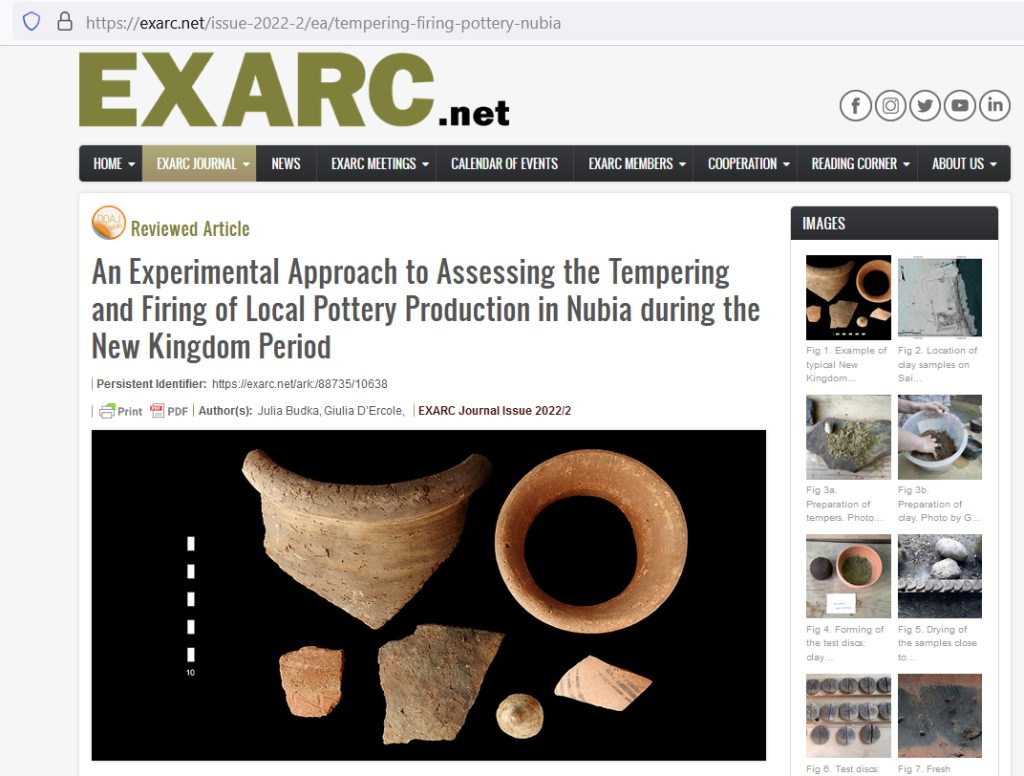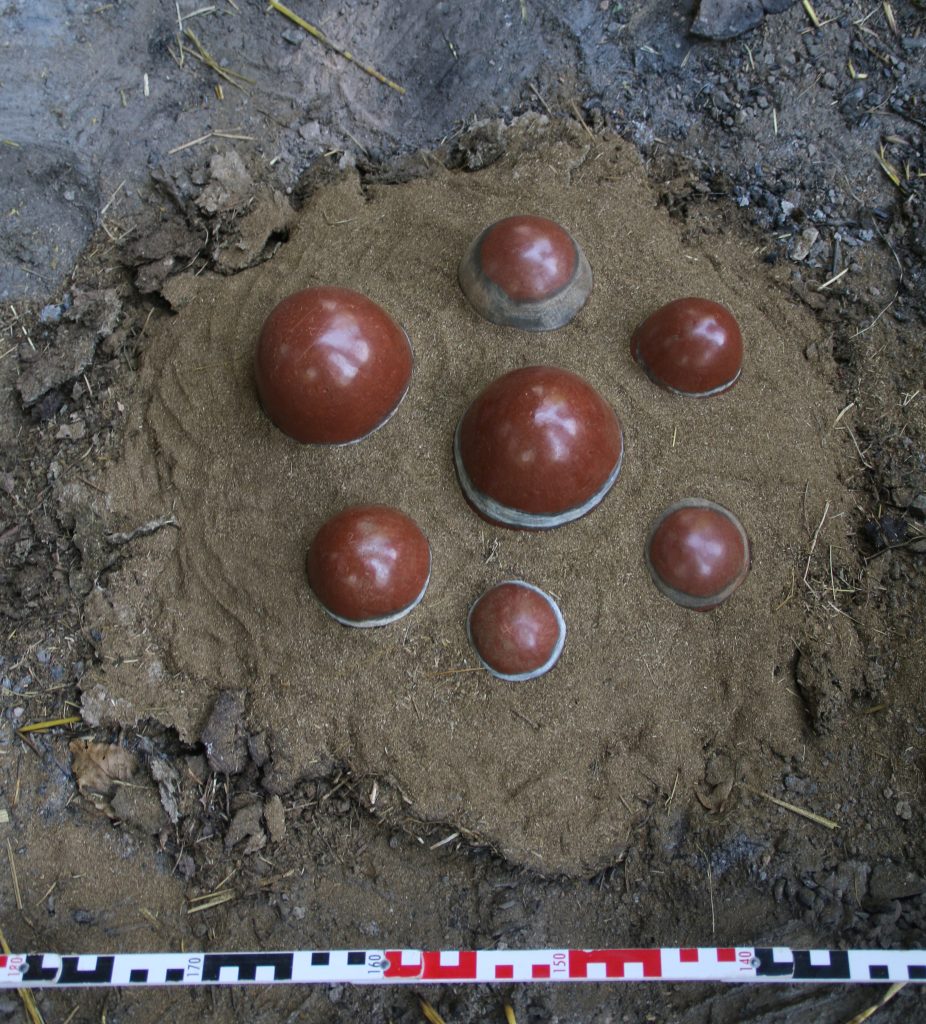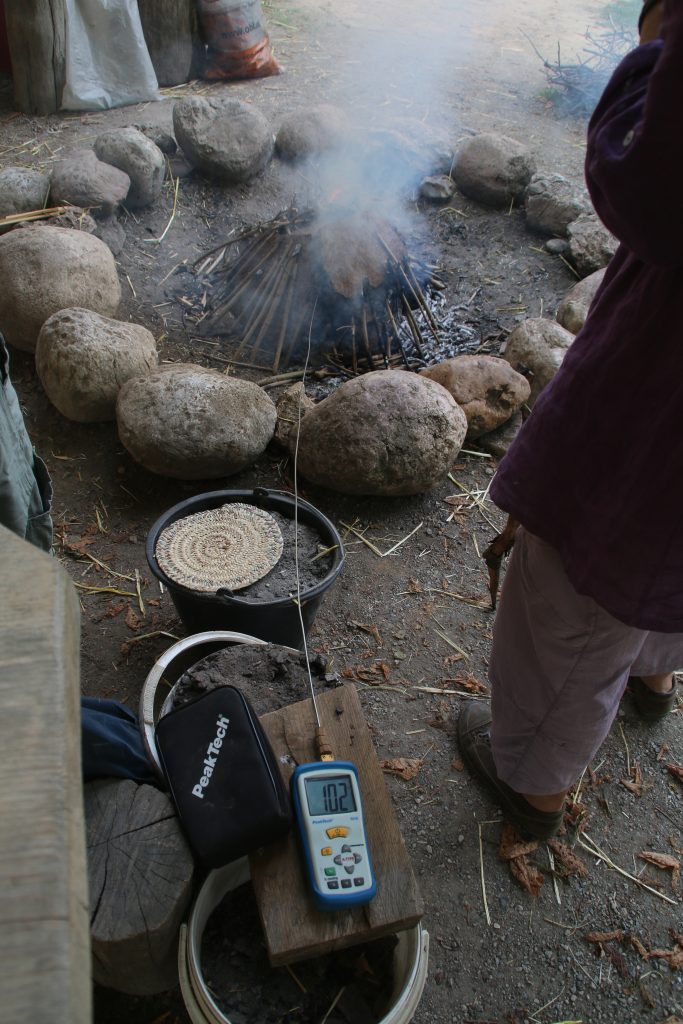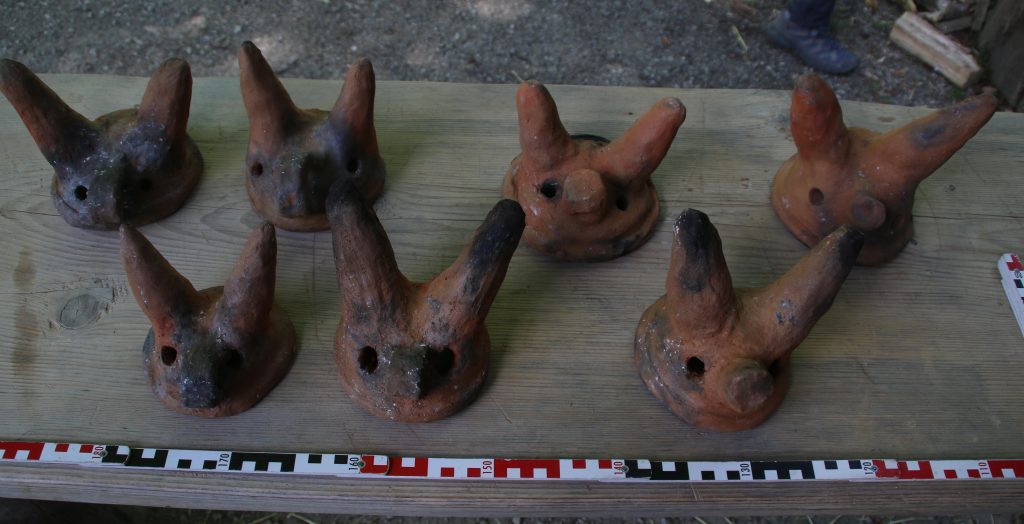Excavations at the site AtW 001 on the west bank of Attab yielded a very large number of pottery sherds – I processed more than 10.300 pieces in our digging house in Ginis during the 2023 season and the final analysis and reconstruction of the number of individual vessels is still ongoing. Already in the field it became clear that a surprisingly large number of intact vessels has survived. These included primarily dishes and plates, beer jars, zir vessels, pot stands and cooking vessels – thus a clearly domestic set of ceramics which finds many parallels in the corpus I processed from the temple town of Sai, but also shows unique and specific features – just fantastiic material which allows addressing a number of various research questions!
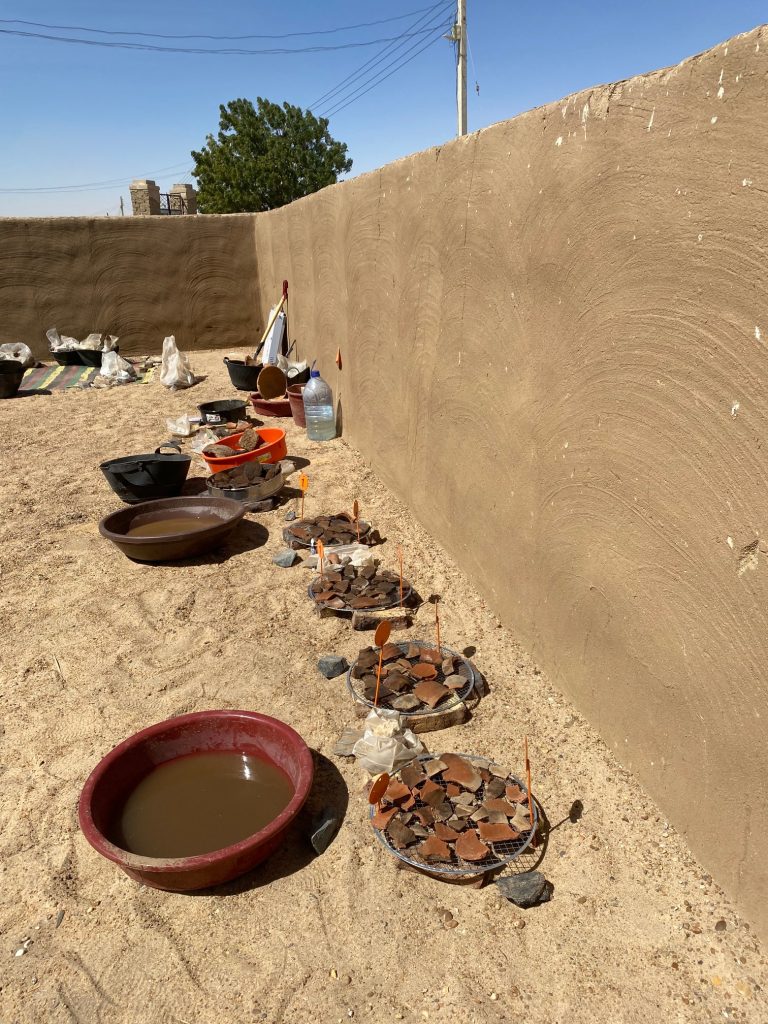
One particular interesting piece which I would like to present today is a large fragment of a typical Nubian style cooking pot. The complete profile of this pot is preserved and it was found in dense mud brick debris, half buried below a collapsed brick. This context yielded a total of 34 pottery sherds with 15 diagnostic pieces and several almost complete vessels; the total of Nubian wares accounted to 32%, nicely confirming our results from 2022 when the number of Nubian wares in the various fill horizons was high, accounting for on average 33% of the ceramics (Budka 2022).
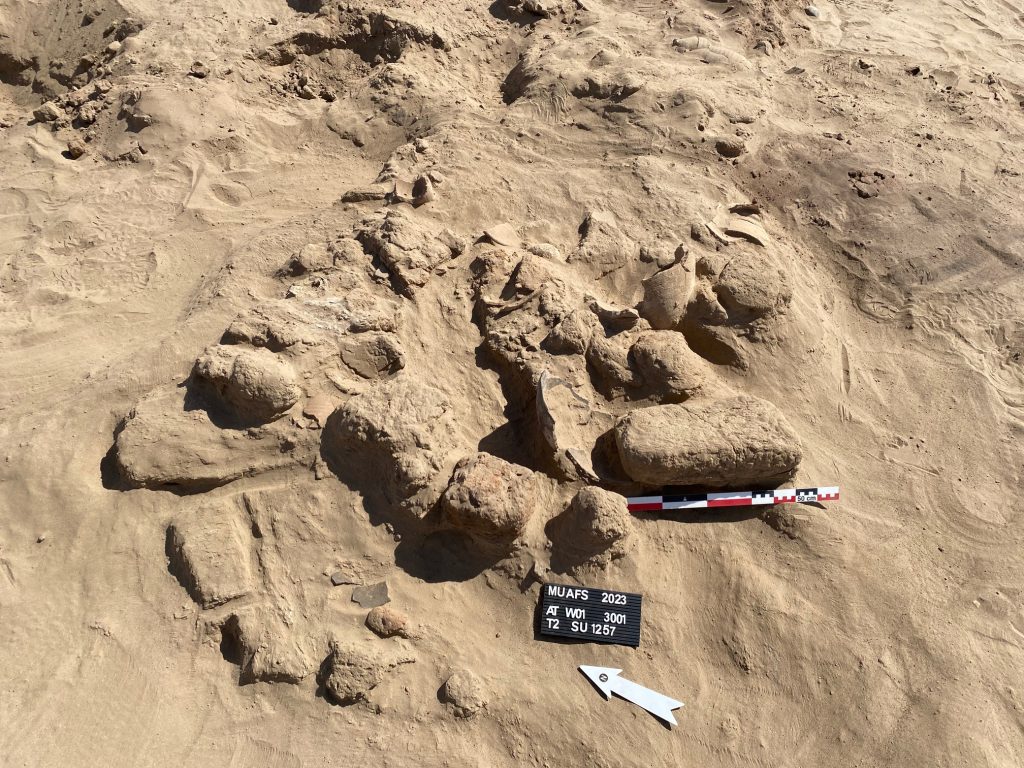
The Nubian pot in question is an example of the most common type of Nubian globular bowls used as cooking pots we found at AtW 001. The vessel shows plaited basketry impression with large rectangular patterns and a distinct rim zone. Such vessels find close parallels at Sai, Sesebi and other New Kingdom sites in Nubia (e.g. Rose 2012; Budka 2020). These basketry impressed cooking pots are firmly rooted in a Kerma tradition of shaping pots in a concave hole using mats/baskets but show an intriguing change of technique in the early 18th Dynasty which is present at sites between the Dongola Reach and southern Upper Egypt (see Gratien 2000 for the new style of basketry impressions starting with so-called Recent Kerma).
Our complete example from AtW 001 started its long journey on Jan. 30 which is not yet over – from the field to the digging house where it was washed, photographed and then put on my drawing table. The pencil drawing I created in Sudan is now in the process of being digitalised – Caroline scanned the drawing already and started the final digital drawing for publication on our interactive multi-touch pen display in the office.
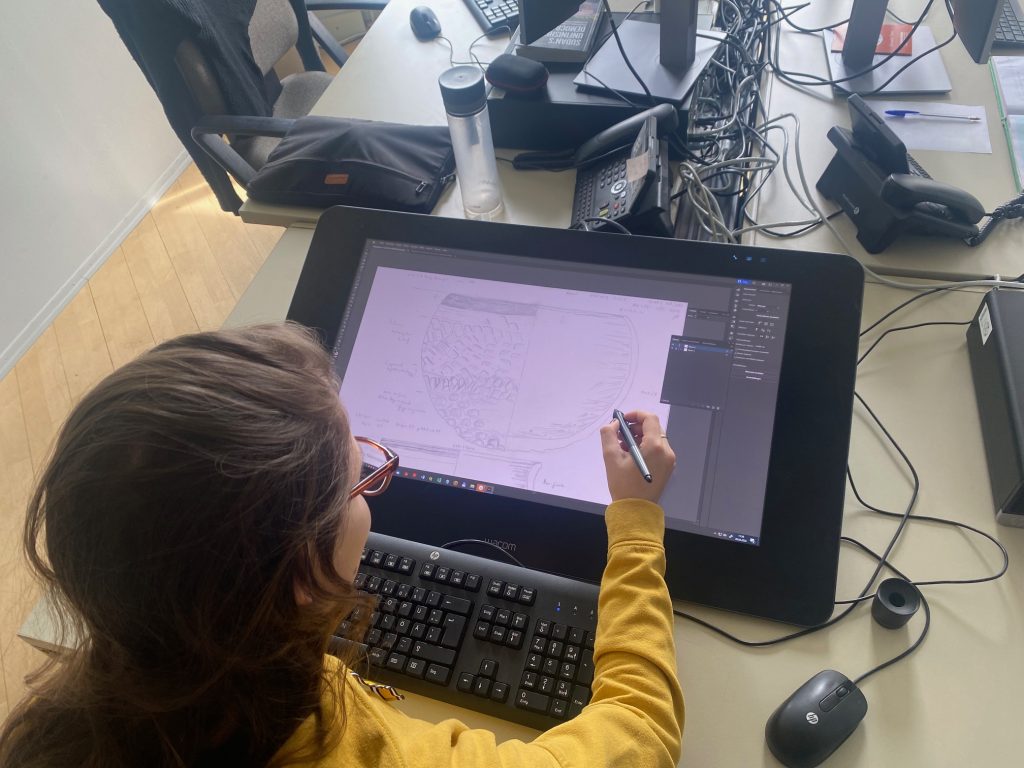
Apart from this, we took two samples from this Nubian cooking pot. One of which will be analysed using Instrumental Neutron Activation Analysis – here, we aim to get information about the provenience of its fabric since this pot clearly seems to be a local product. The second sample is waiting for Organic Residue Analysis, hopefully enabling us to reconstruct what was once cooked within this pot. More details about our approach combining standard macroscopic analysis of pottery with various complementary laboratory methodologies can be found in an earlier blog post by Giulia D’Ercole.
As I hopefully could illustrate, the complex voyage of this Nubian cooking pot will continue – but within just 2 months we have already achieved important working steps in order to publish this important fragment of evidence of settlement activity on the west bank of Attab during the early New Kingdom.
References
Budka 2020 = Budka, J. AcrossBorders 2. Living in New Kingdom Sai. Archaeology of Egypt, Sudan and the Levant 1. Vienna: Austrian Academy of Sciences Press, 2020.
Budka 2022 = Budka, J. Early New Kingdom settlement activities in the periphery of Sai Island: towards a contextualisation of fresh evidence from Attab West, MittSAG – Der Antike Sudan 33, 2022, 45‒61.
Gratien 2000 = Gratien, B. Les pots de cuisson nubiens et les bols décorés de la première moitié du 2e millénaire avant J.-C.: problèmes d’identification, Cahiers de la céramique égyptienne 6, 2000, 113‒148.
Rose 2012 = Rose, P. Early 18th Dynasty Nubian Pottery from the Site of Sesebi, Sudan. In Nubian Pottery from Egyptian Cultural Contexts of the Middle and Early New Kingdom. Proceedings of a Workshop held at the Austrian Archaeological Institute at Cairo, 1–12 December 2010. Ergänzungshefte zu den Jahresheften des Österreichischen Archäologischen Institutes 13, ed. by I. Forstner-Müller and P.J. Rose, 13‒29. Vienna: Österreichisches Archäologisches Institut, 2012.

